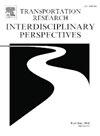Evaluating urban network efficiency and safety impacts of connected and autonomous vehicles in complex city environments
IF 3.8
Q2 TRANSPORTATION
Transportation Research Interdisciplinary Perspectives
Pub Date : 2025-07-01
DOI:10.1016/j.trip.2025.101538
引用次数: 0
Abstract
The rapid advancements in autonomous vehicle technology, particularly in ride-sharing services within urban networks, emphasize the critical need for comprehensive research on their impact, especially as CAV (connected and autonomous vehicle) operators target new markets. This study addresses the pressing gap in evidence regarding the effects of connected and autonomous vehicles (CAVs) on urban infrastructure, a concern for communities that lack a thorough understanding of how these technologies will influence traffic on their network. By modeling a 13 sq. km network of downtown San Jose using the VISSIM microscopic traffic simulation tool, this research assesses both the operational and safety performance of the network at varying market penetration rates for the CAVs. The key evaluation metrics include average travel times, delays, and speeds, alongside surrogate safety assessments to quantify simulated conflict types.
Notably, the findings indicate significant improvements in roadway performance and safety correlating with increased CAV penetration, with average stop delays and overall vehicle delays decreasing by up to 11% and 7%, respectively. However, the maximum platoon size did not significantly enhance these benefits. This phenomenon may be attributed to the inherent complexities of urban networks, which present numerous interruptions, such as traffic signals and multimodal traffic accessing the network from several points. Based on the Surrogate Safety Assessment Model (SSAM) conducted, while the number of critical crossing conflicts decreased, a rise in lane-change and rear-end near misses was identified with increasing CAV penetration rates. As communities consider allowing CAV operations, this research not only highlights the potential advantages of integrating CAVs into urban traffic systems but also emphasizes the necessity for informed planning to harness their full benefits while mitigating potential challenges. Ultimately, understanding the dynamic interactions between CAVs and human-driven vehicles (HVs) and other multimodal traffic is essential for developing effective strategies that promote sustainable and efficient urban mobility.
在复杂的城市环境中评估联网和自动驾驶汽车的城市网络效率和安全影响
自动驾驶汽车技术的快速发展,特别是在城市网络中的乘车共享服务方面,强调了对其影响进行全面研究的迫切需要,特别是在CAV(联网和自动驾驶汽车)运营商瞄准新市场的情况下。本研究解决了有关联网和自动驾驶汽车(cav)对城市基础设施影响的证据方面的紧迫空白,这是对这些技术将如何影响其网络交通缺乏全面了解的社区所关注的问题。通过建模一个13平方。使用VISSIM微观交通模拟工具,本研究评估了在不同市场渗透率下自动驾驶汽车网络的运营和安全性能。关键评估指标包括平均旅行时间、延迟和速度,以及用于量化模拟冲突类型的替代安全评估。值得注意的是,研究结果表明,随着自动驾驶汽车普及率的提高,道路性能和安全性得到了显著改善,平均停车延误和总体车辆延误分别减少了11%和7%。然而,最大排的大小并没有显著提高这些好处。这种现象可能归因于城市网络固有的复杂性,其中存在许多中断,例如交通信号和从几个点进入网络的多式联运交通。基于替代安全评估模型(SSAM),虽然临界交叉冲突的数量减少,但随着自动驾驶汽车渗透率的增加,变道和追尾未遂事故的数量增加。随着社区考虑允许自动驾驶汽车运营,本研究不仅强调了将自动驾驶汽车整合到城市交通系统中的潜在优势,还强调了在减轻潜在挑战的同时,充分利用其优势进行明智规划的必要性。最终,了解自动驾驶汽车与人类驾驶车辆(HVs)以及其他多式联运交通之间的动态相互作用,对于制定促进可持续和高效城市交通的有效策略至关重要。
本文章由计算机程序翻译,如有差异,请以英文原文为准。
求助全文
约1分钟内获得全文
求助全文
来源期刊

Transportation Research Interdisciplinary Perspectives
Engineering-Automotive Engineering
CiteScore
12.90
自引率
0.00%
发文量
185
审稿时长
22 weeks
 求助内容:
求助内容: 应助结果提醒方式:
应助结果提醒方式:


